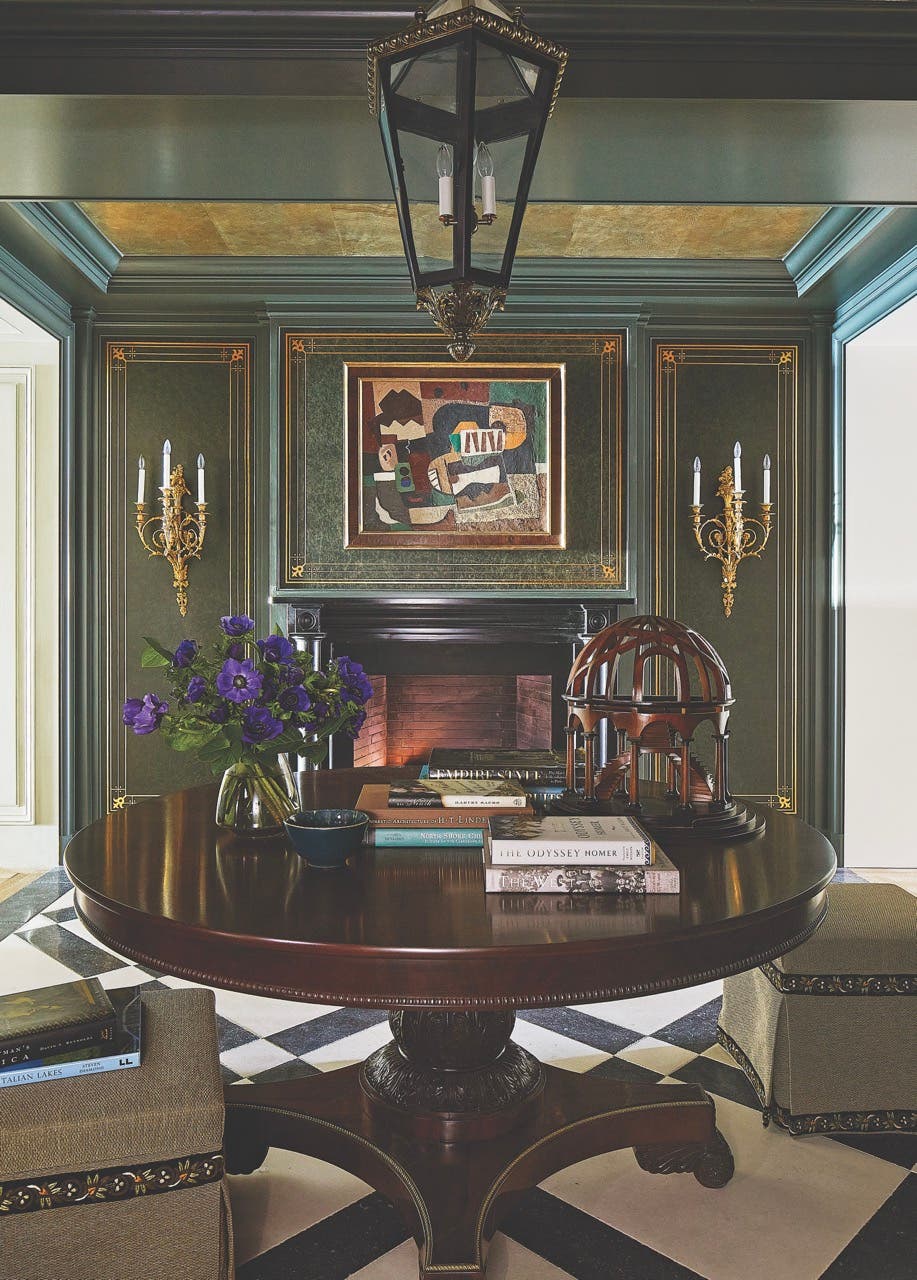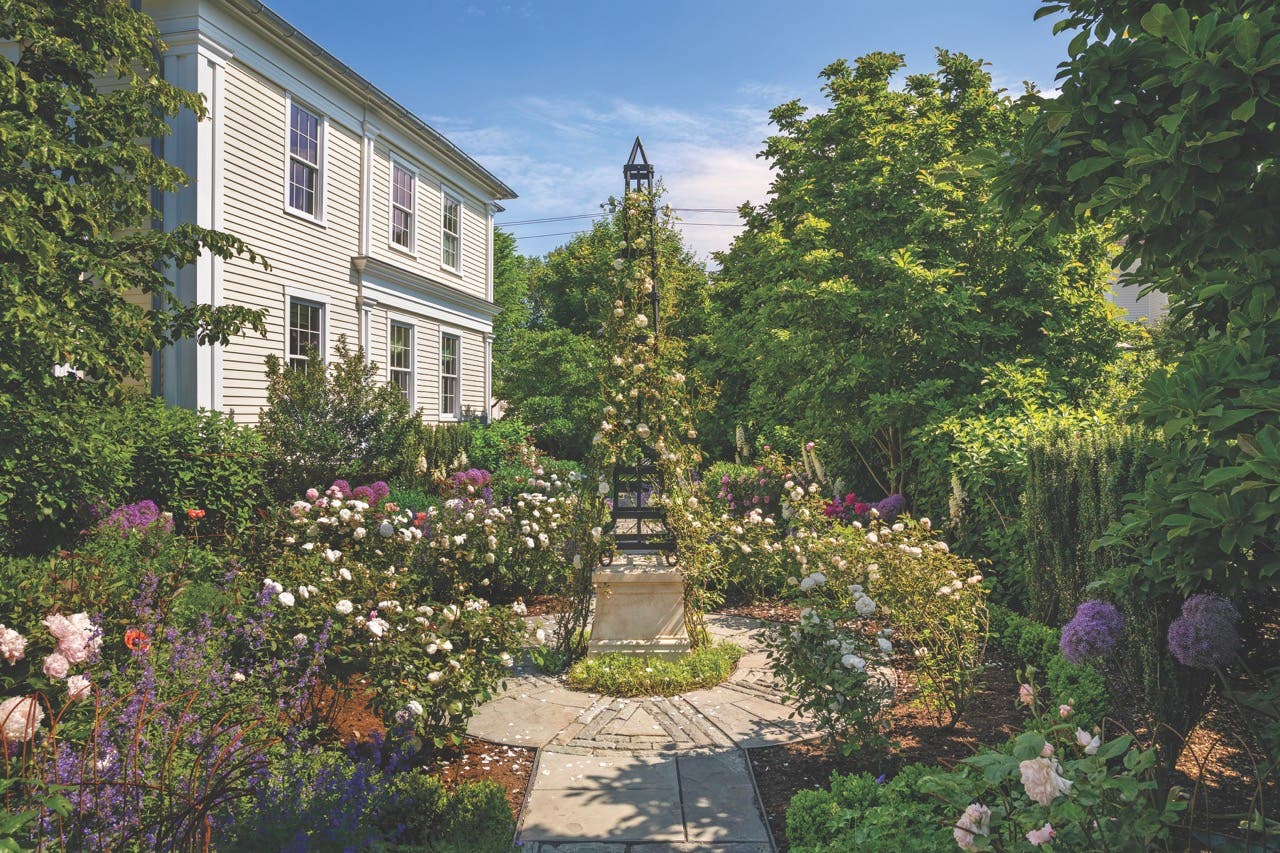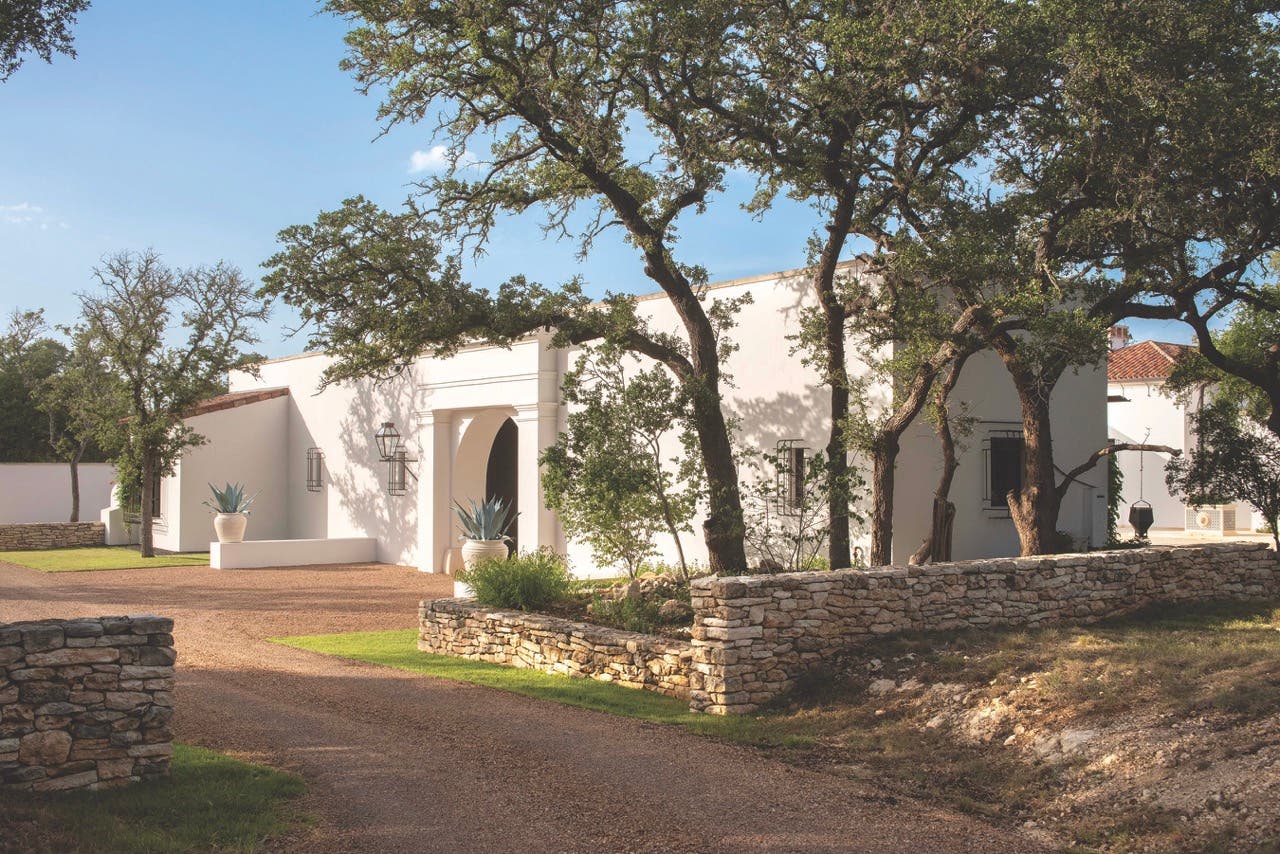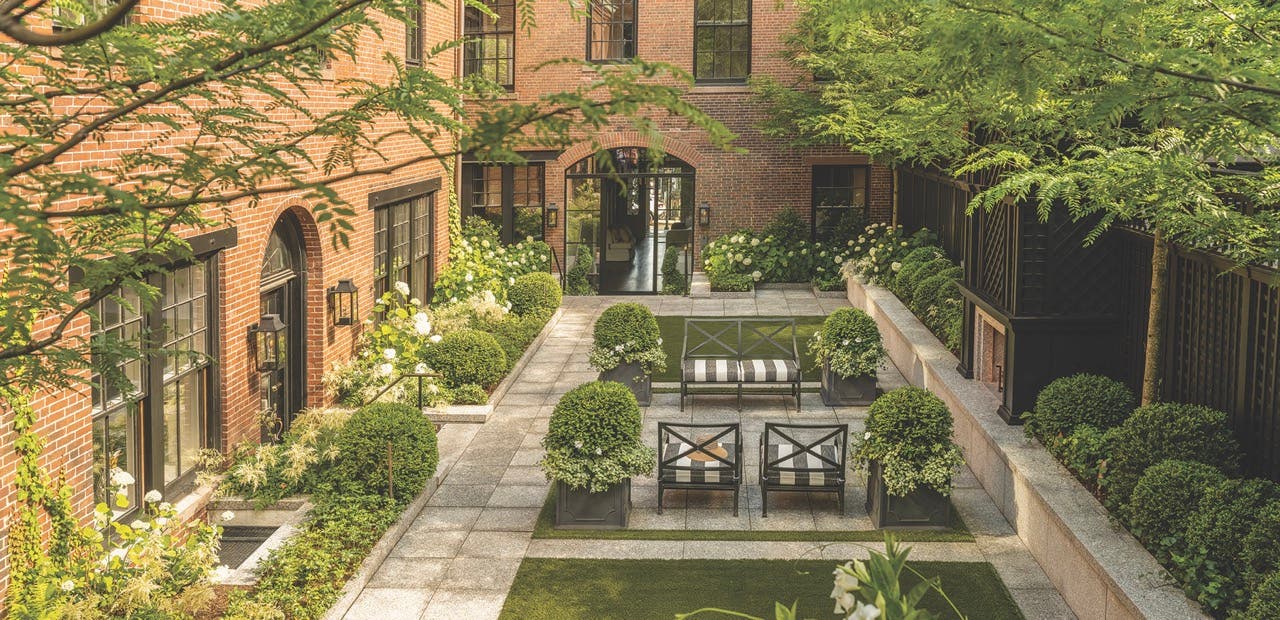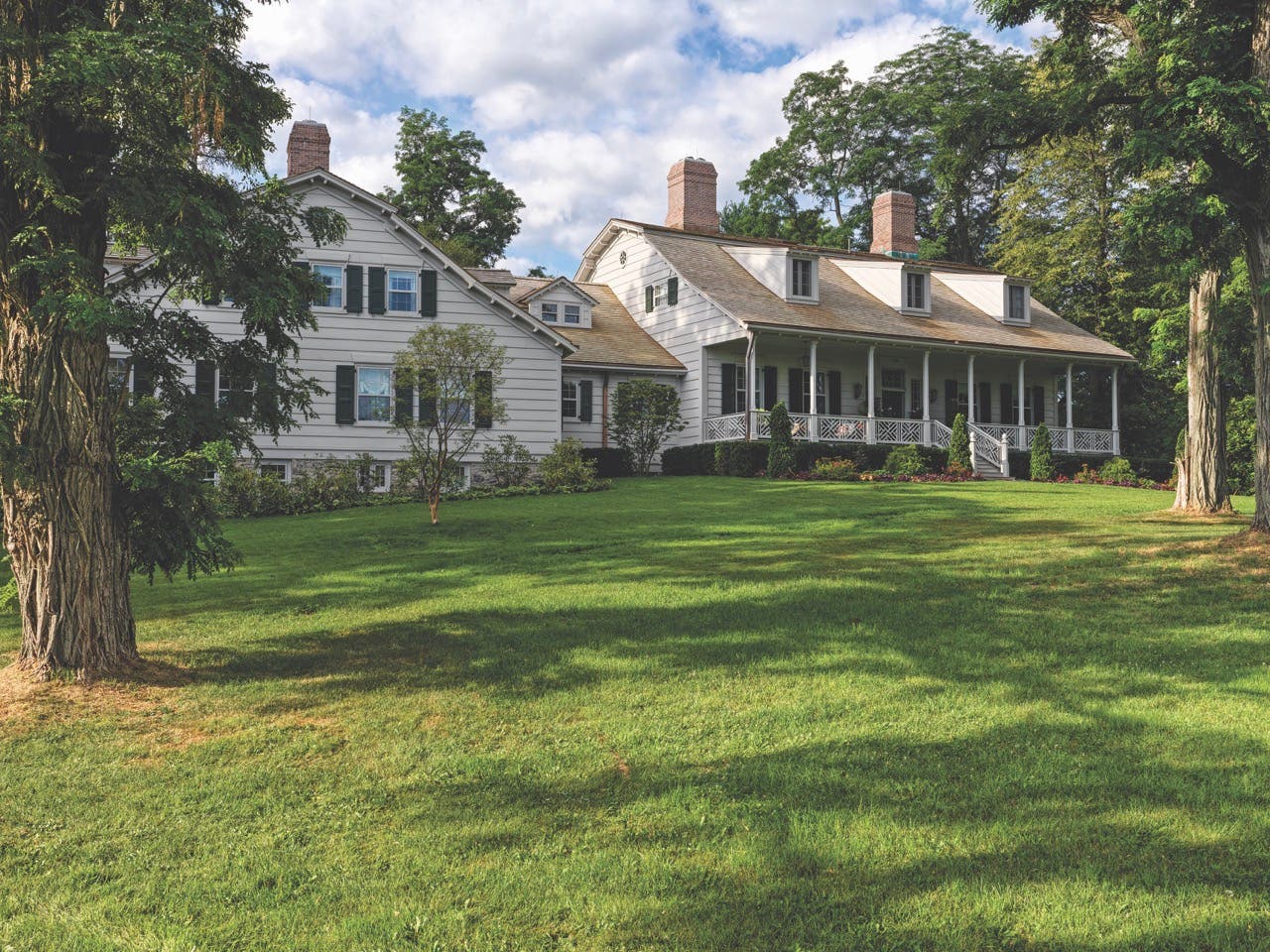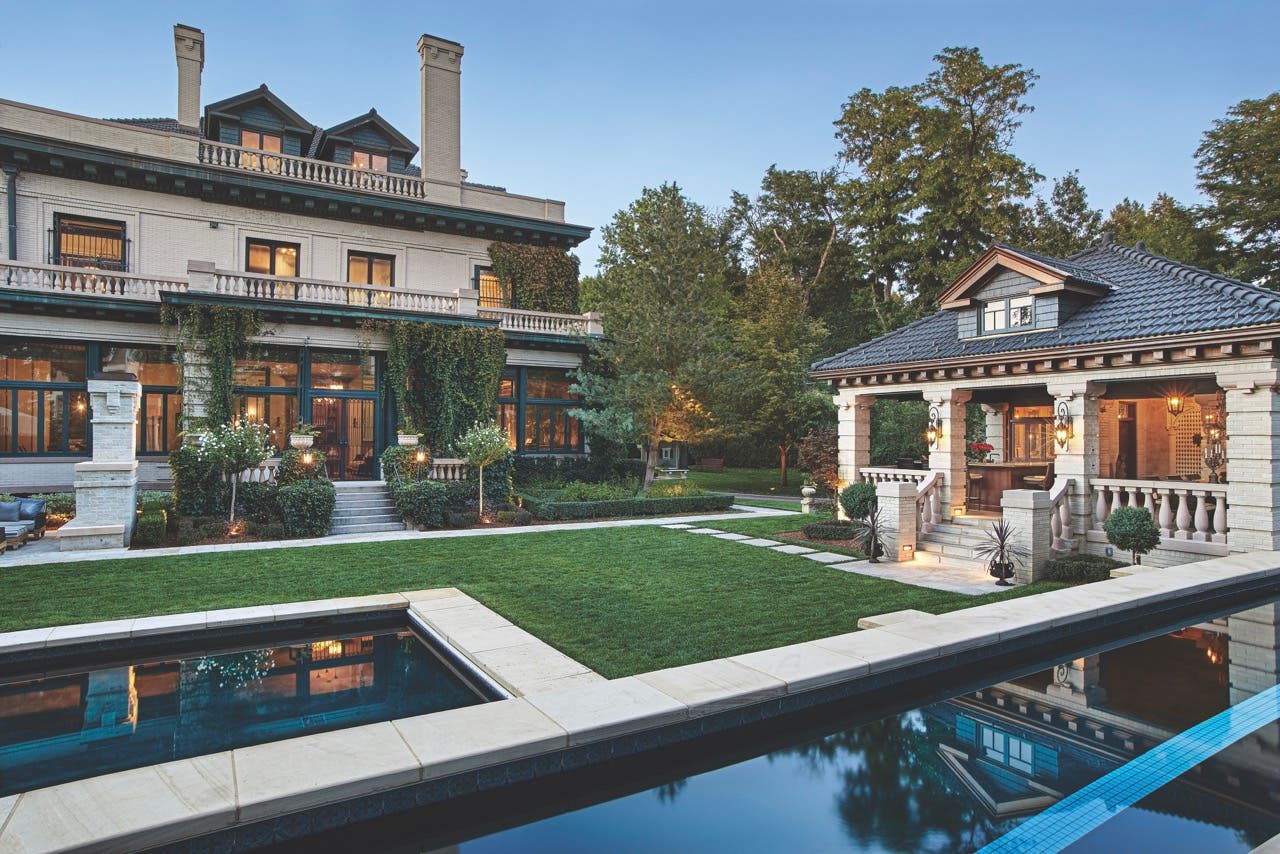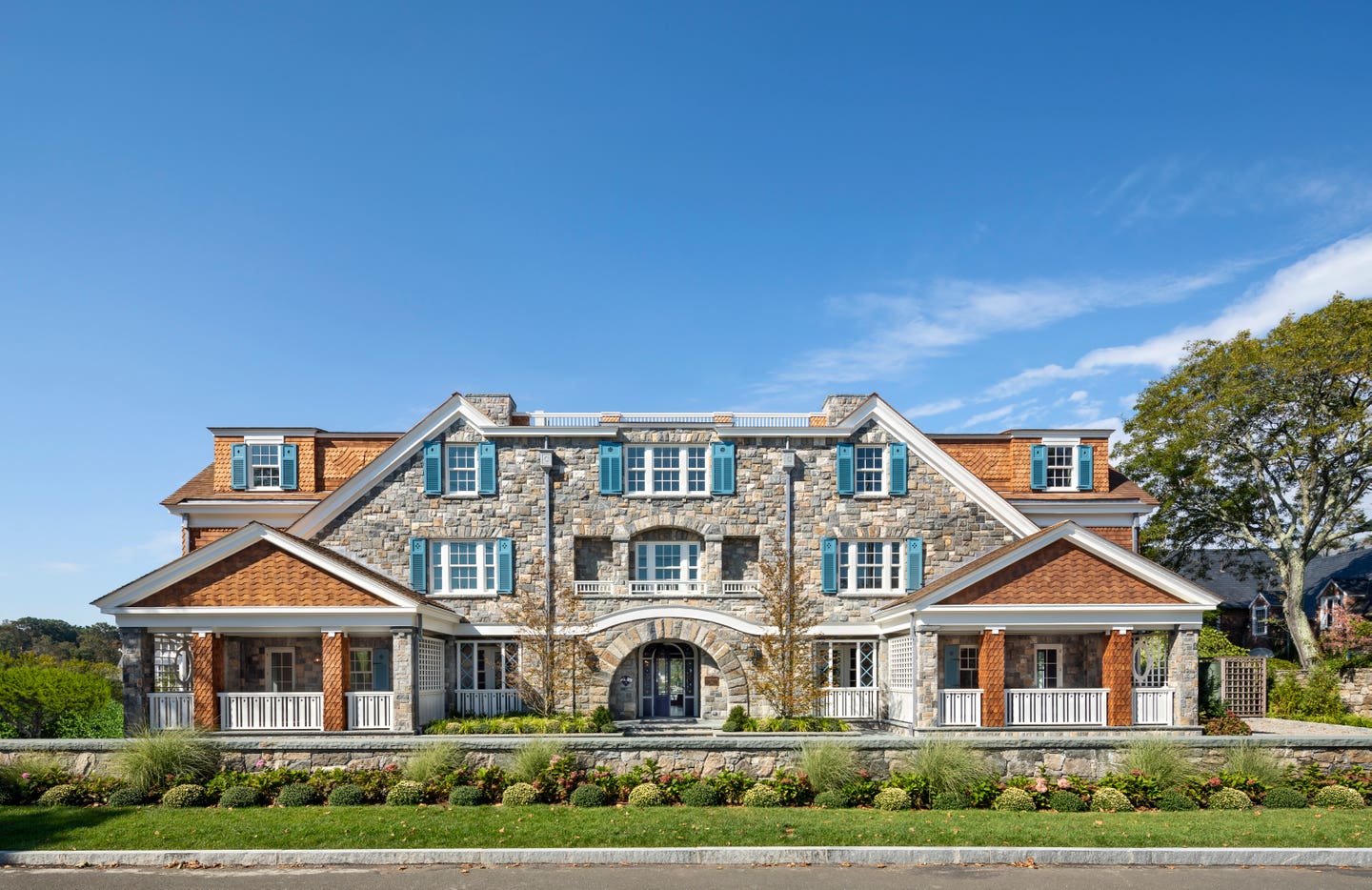
Palladio Awards
Robert A.M. Stern Architects: The Corsair
One of the newer waterfront residents in Greenwich, Connecticut, is The Corsair, a luxury boutique condo development whose traditional New England-style design makes itself at home among the neighborhood’s grand single-family houses.
The eight units of the shingle-style and stone structure, designed by Robert A.M. Stern Architects, replaced an architecturally insignificant single-family house that had been stripped of ornament and detail and that had been subdivided into apartments.
“The developer wanted The Corsair to fit in with Greenwich but also wanted it to be an iconic project,” says RAMSA’s Gary L. Brewer, partner-in-charge and project manager of the team, which included associate-in-charge Braden Novotny and project managers Daniel Diaz and Jennifer Fitzpatrick. “Our office is known for the shingle style and for tall luxury apartment buildings. The Corsair is unique because it’s larger in scale than a house but smaller than a big tower.”
For architectural inspiration for the 14,000-square-foot building, the RAMSA team looked not only at single-family residences but also at historic shingle-style seaside resorts. “We wanted each unit to have water views and a porch, and resorts offer good precedents,” Brewer says.
The Corsair, which is named for the private yacht that Gilded Age mega-financier J.P. Morgan kept in the harbor, is three stories, but the massing, the strong street presence, with its double gables and long, large porches, conveys a residential scale and gives the building the appearance of a two-story structure.
Greenwich’s strict height regulations also played a key role in grounding the building. “It’s three levels plus parking, but it looks like two stories because of the downward slope of the plot to the water,” Brewer says. “The highly articulated roofscape—a thoughtful composition of gables and shed dormers—maximizes available space in the top-floor residences without exceeding zoning limitations.”

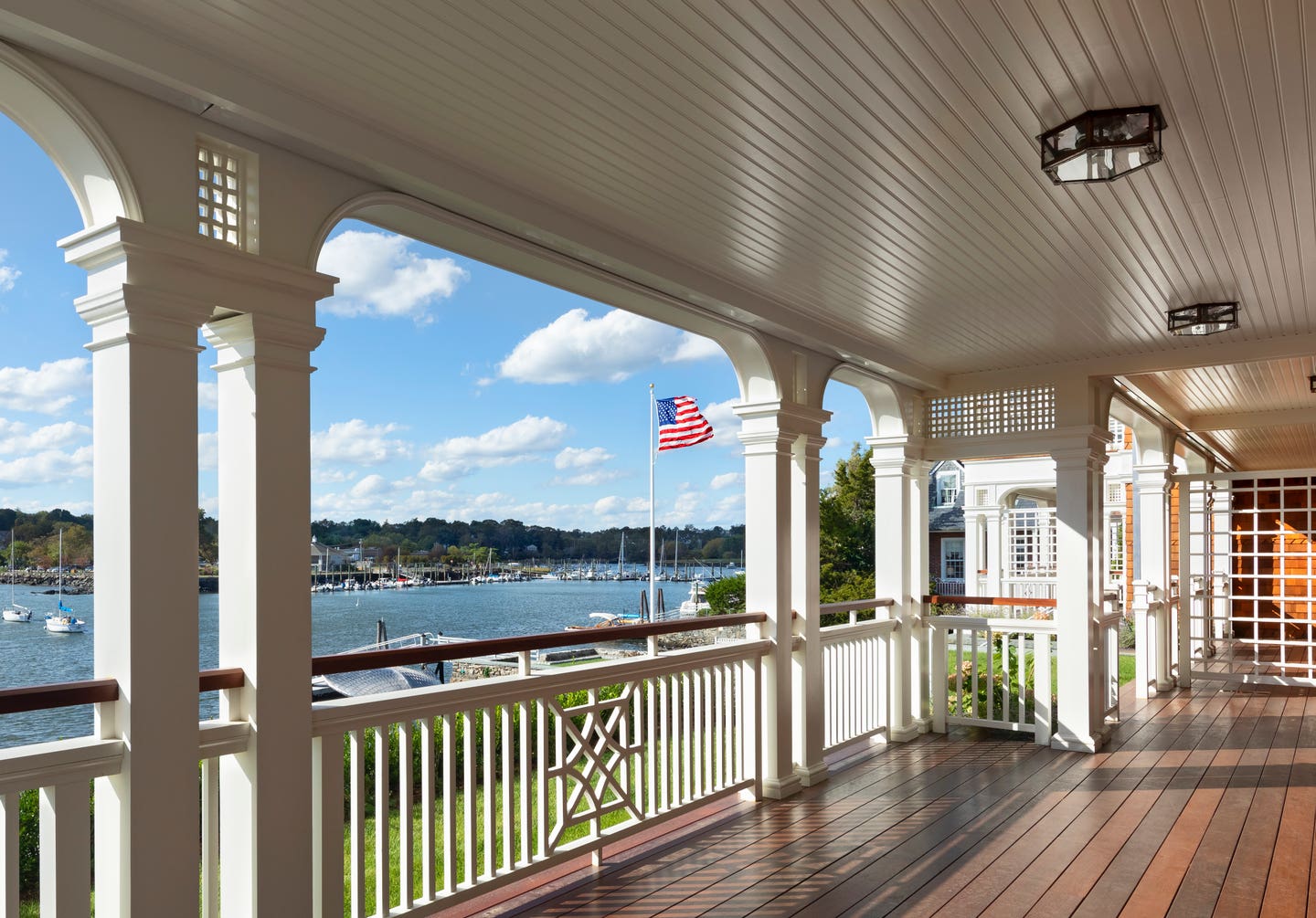
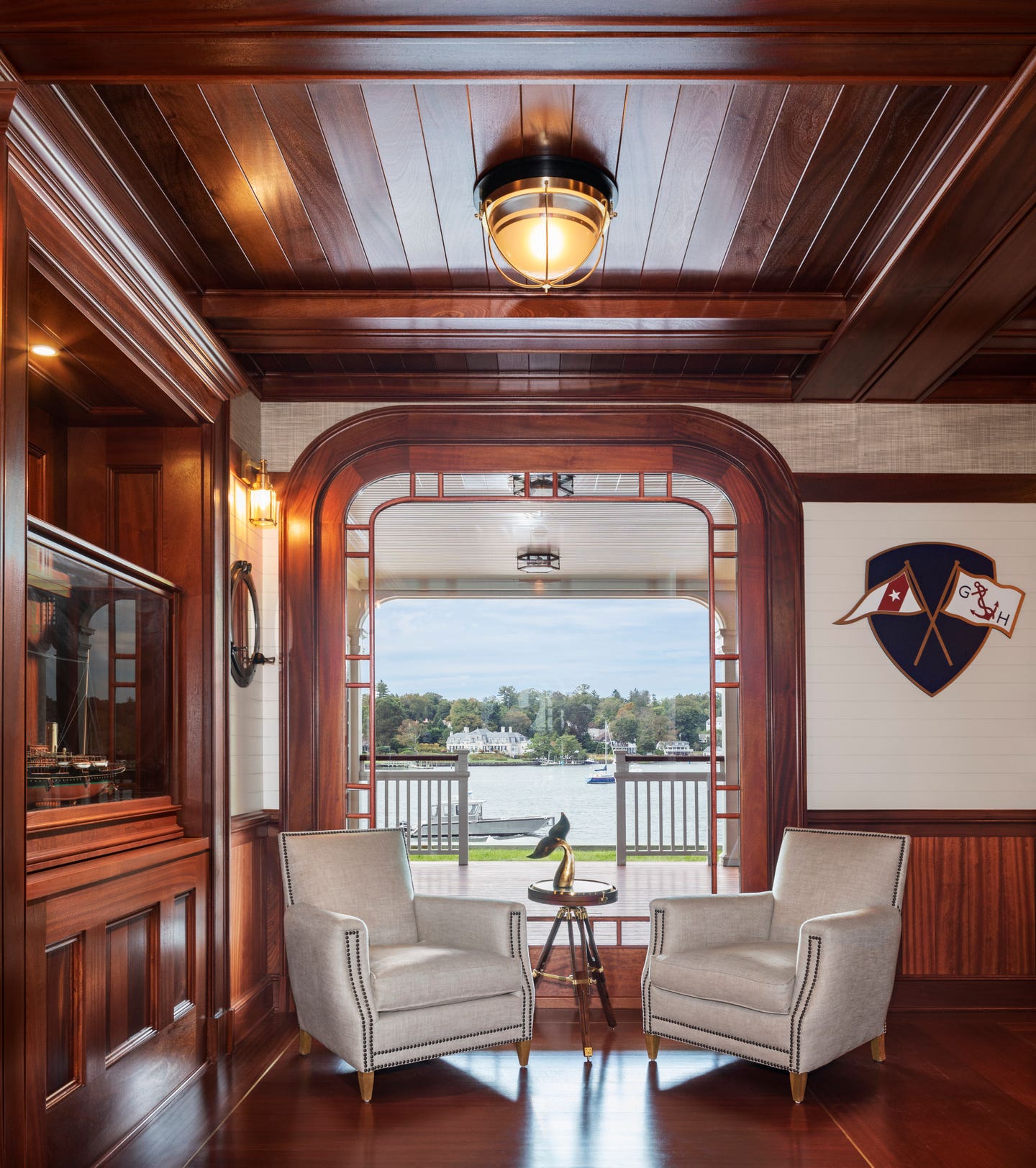
The front of the building offers a gray fieldstone façade punctuated by an impressive arched entryway, double-hung windows, and fewer porches than the back, details that offer a single-family context.
The fieldstone, locally sourced, continues around the corners of the building then changes to cedar shingles. The back façade, which faces the water, features large windows and long porches that are divided by trellises.
“We took great delight in the shingling patterns,” Brewer says, adding that the designs, including waves, are a subtle nod to the nautical theme. “They are brown/gray like the hull of a boat, and the operable shutters are blue, a reference to the water.”
The same stone also is used for a set of terraced retaining walls, which evoke the harbor wall, provide screening for the garages that are discreetly tucked into the building, and pave the way to a waterside promenade.
The elaborate handrails of the back porches, typical of historic houses in the shingle style, feature a central medallion that evokes a compass or ship’s wheel. They are designed to appear lower than the required forty-two inches “because we made the handrails the same color as the shingles, so they appear to disappear,” Brewer says.
The details, subtly executed, reinforce the building’s seaside sensibility. The side of the building facing the Indian Harbor Yacht Club, for example, features shingles in a wave pattern, shutters with a porthole motif, and zinc leader boxes embellished with “C” for The Corsair. The tops of the columns in the back are defined by a trellis-like motif that looks like woven ropes.
The public spaces in The Corsair also play up its waterside location. The view-through from the front door, which has colored bottle-glass sidelights, to the paneled lobby, leads straight to the waterfront.
“We wanted it to feel like you’re inside a yacht,” Brewer says, adding that “the little things add to the quality of the building. The more you look at it, the more it holds your eye, and you see things you didn’t see on the first glance.”
The individual units, which range from 800-square-foot one bedrooms to 2,000-square-foot three bedrooms, are designed around a great room concept—living, dining, and kitchen spaces are combined and meant to exploit the views, which Brewer calls “unique because you can see the water and boats and, at night, even the lights of the houses beyond on the opposite shore instead of just seeing a vast expanse of ocean.”
Brewer notes that The Corsair stands as a model for other traditional-style multi-residential projects. And it has received a lot of complimentary comments from passers-by.
“Because it’s on the way to Downtown Greenwich, which is within walking distance, people stop and look at it,” he says. “The developer overheard a couple mistakenly say, ‘It’s so wonderful they restored the old building instead of tearing it down.’ We are happy that the neighbors feel The Corsair contributes to the quality of the place.”
KEY SUPPLIERS
ARCHITECT, INTERIOR DESIGNER, DESIGNER OF CONDO MODEL
Robert A.M. Stern Architects ramsa.com
DEVELOPER/BUILDER
National Resources
LANDSCAPE ARCHITECT
IQ Landscape Architects



